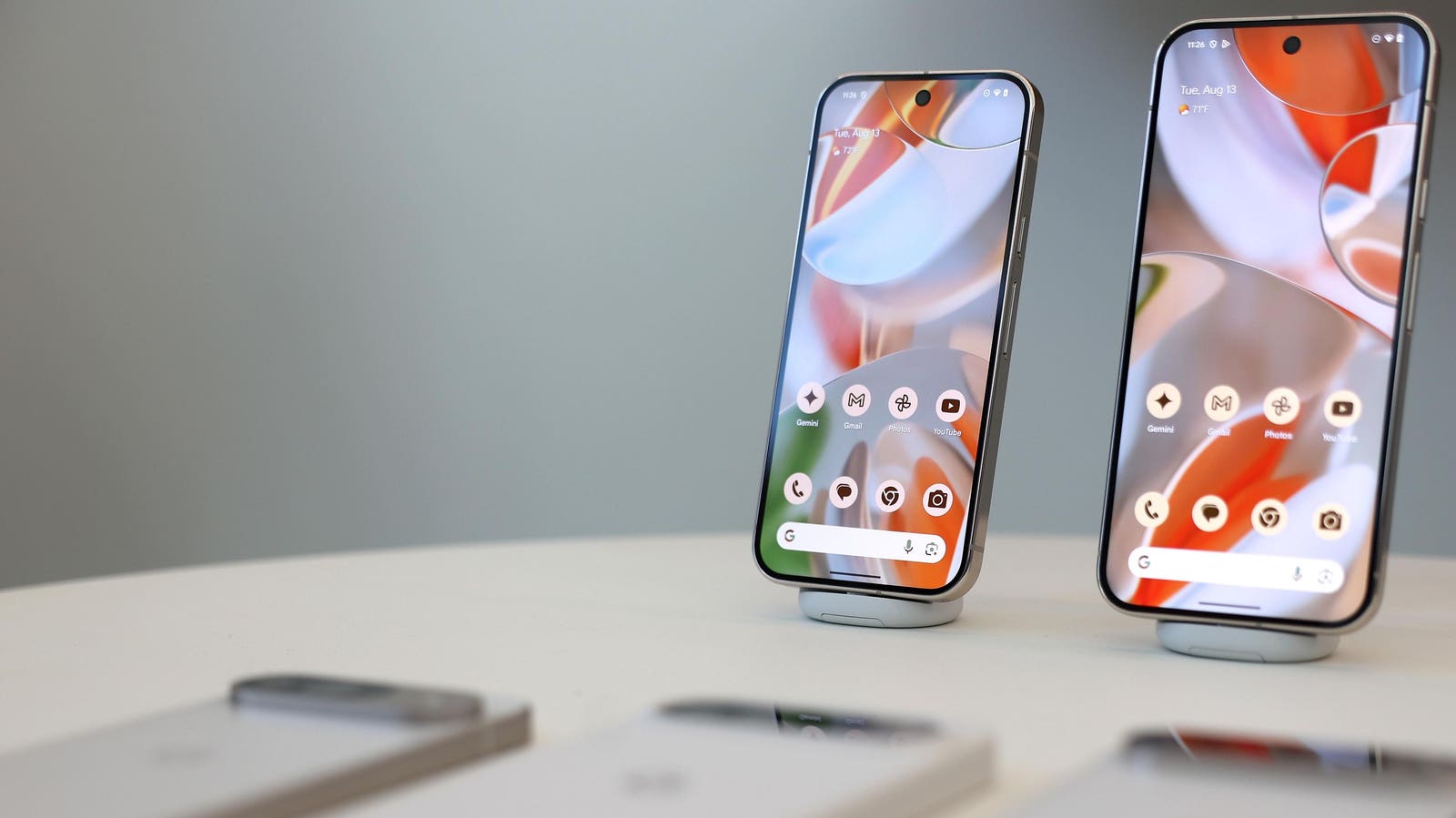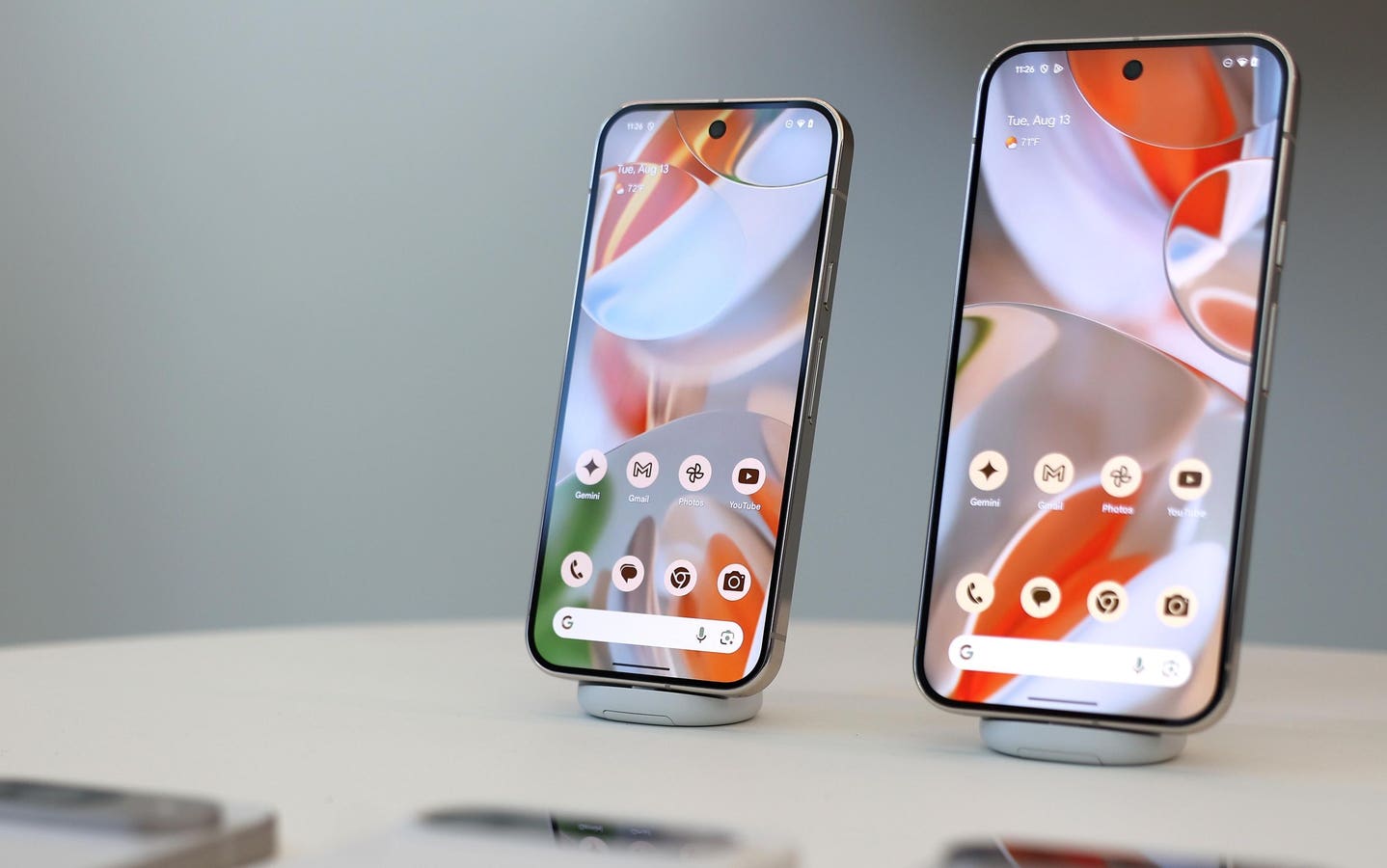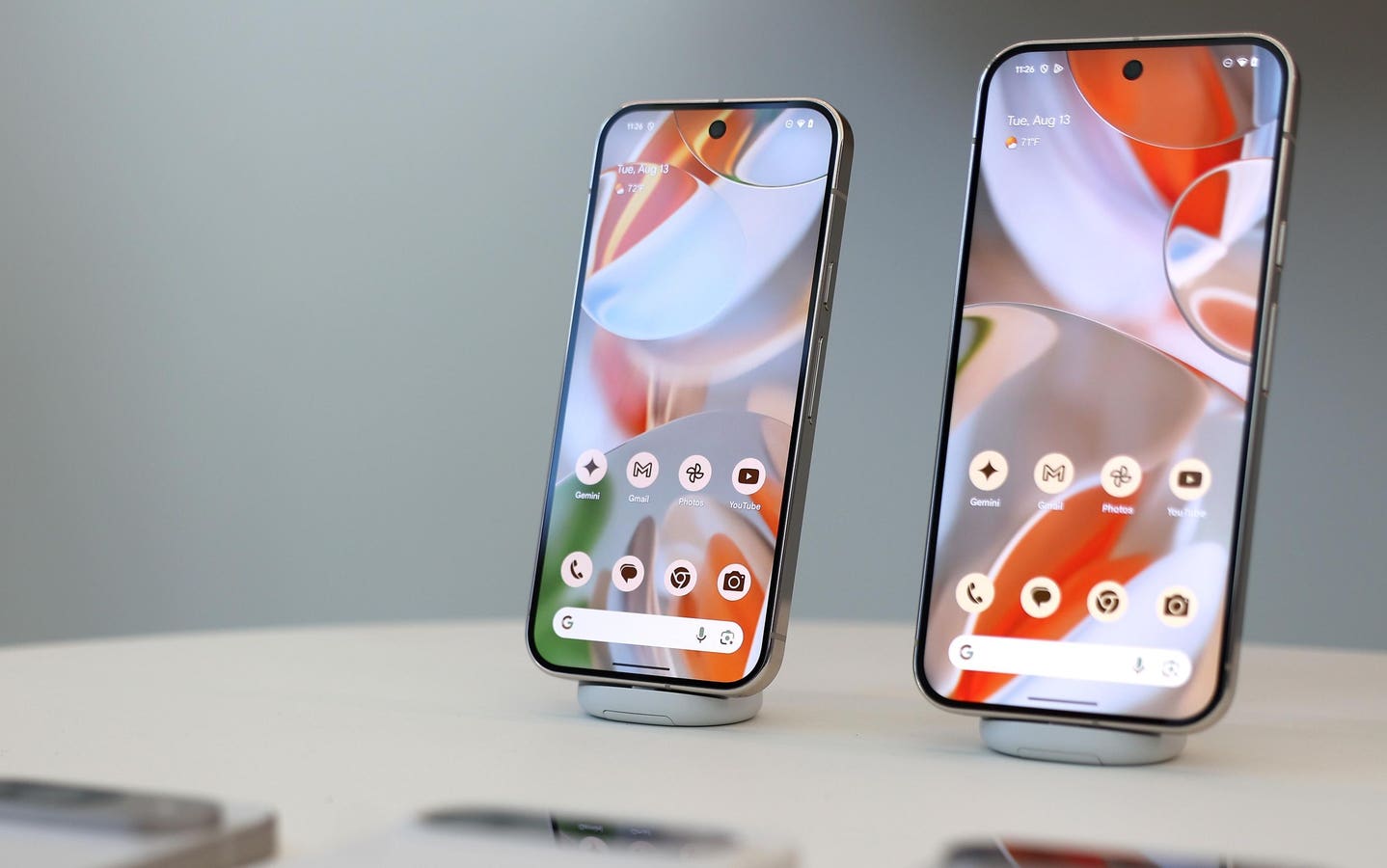Ever feel like Android and iPhone are playing a game of “copycat”?
Well, Google just threw a fresh punch in that ring. The latest update to Android is causing ripples, with tech giants whispering that it’s bringing a wave of iPhone-esque features to the Android ecosystem.

Google’s Android Evolution: Bridging the Gap with iPhones

Google’s latest update to its Messages app is a significant step towards bridging the gap between Android and iPhone users. The convergence of messaging is a key aspect of this evolution, and we’ll explore two critical developments that signal a shift towards a user experience akin to Apple’s iMessage.

The Convergence of Messaging
The RCS (Rich Communication Services) renaissance is underway, and Google’s latest update to its Messages app is at the forefront of this movement. RCS promises end-to-end encryption for texts between Android and iPhones, finally providing a secure messaging solution that doesn’t require users to switch to third-party apps.
The new RCS labels and color-coding will clearly distinguish users employing RCS, including iPhones that have enabled the feature. This will remove the guesswork from secure messaging, making it easier for users to determine whether a conversation will be encrypted or not.
One of the most notable features of the new RCS labels is the use of Material You accents to tint the names of RCS users. This color-coding scheme is a departure from the blue bubble/green bubble differentiation that has become a hallmark of iMessage. SMS-only contacts will appear in plain white, making it easier to identify which conversations are secure and which are not.
While the new RCS labels are a significant improvement, it’s essential to note that full RCS encryption is still pending. Once the upgrade is complete, RCS will finally be able to provide secure, cross-platform messaging between Androids and iPhones without any strings attached.
A Security Tightrope: Pixel vs. Android Fragmentation
Google’s latest update to its Messages app is not the only significant development in the security landscape. A recent vulnerability in Android’s video management system has raised concerns about the security of Android devices, particularly those that are not running the latest version of the operating system.
The vulnerability, known as CVE-2024-53104, may be under limited, targeted exploitation. However, Google has already released a patch to address the issue, and Pixel owners were among the first to receive the update. Samsung, on the other hand, has not yet confirmed when the fix will roll out to its devices.
This highlights the significant difference between Pixel and Android fragmentation. As Google controls both the software and hardware end-to-end, it can release updates quickly and uniformly to its devices. Other Android OEMs, such as Samsung, must adapt the update for their own OS and then roll it out, often resulting in a delayed response to security threats.
This is a critical issue, particularly given the rising cost of flagship devices. With prices ranging from $1,000 to $2,000, waiting weeks or even months for updates does not seem viable. As the Android ecosystem continues to evolve, it’s essential that developers and manufacturers prioritize security and timely updates to ensure user trust and confidence.
Pixel Owners in the Lead
Pixel owners have long been at the forefront of Android security and innovation. With the latest update, they’re once again leading the pack, and it’s essential to recognize the benefits of this approach.
By releasing updates quickly and uniformly, Google is able to ensure that Pixel owners have the latest security patches and features. This not only provides a more secure experience but also gives users a competitive advantage in terms of innovation and features.
As the Android ecosystem continues to evolve, it’s essential that developers and manufacturers prioritize security and timely updates. By doing so, they can ensure user trust and confidence, driving adoption and growth in the market.
RCS and the Future of Messaging
The RCS renaissance is a significant development in the messaging landscape, and it’s essential to understand the implications for users and developers alike.
Secure Messaging at Last
RCS promises end-to-end encryption for texts between Android and iPhones, finally providing a secure messaging solution that doesn’t require users to switch to third-party apps.
This is a significant breakthrough, particularly given the rising concerns about data security and privacy. With RCS, users can finally enjoy secure, cross-platform messaging without the need for complex workarounds or third-party apps.
RCS and the Competition
RCS is not the only secure messaging solution available, and it’s essential to understand how it compares to other options.
WhatsApp, for example, offers end-to-end encryption, but it’s limited to users of the app. Other options, such as Signal and Telegram, offer secure messaging, but they have their own limitations and drawbacks.
RCS, on the other hand, promises a seamless and secure messaging experience that’s compatible with both Android and iPhone users. This makes it an attractive option for those looking for a secure and convenient messaging solution.
The Future of RCS
As RCS continues to evolve, it’s essential to understand the implications for users and developers alike.
With the latest update, Google is taking significant steps towards aligning with iMessage, providing a more unified and secure messaging experience. This is a critical development, particularly given the rising concerns about data security and privacy.
As RCS continues to evolve, it’s essential to prioritize security, convenience, and innovation. By doing so, developers and manufacturers can ensure user trust and confidence, driving adoption and growth in the market.
Pixel and Android Security
Pixel and Android security are critical topics, particularly given the rising concerns about data security and privacy.
Pixel Security
Pixel owners have long been at the forefront of Android security and innovation. With the latest update, they’re once again leading the pack, and it’s essential to recognize the benefits of this approach.
By releasing updates quickly and uniformly, Google is able to ensure that Pixel owners have the latest security patches and features. This not only provides a more secure experience but also gives users a competitive advantage in terms of innovation and features.
Android Security
Android security is a more complex issue, particularly given the fragmentation of the ecosystem. With multiple OEMs and device manufacturers, it’s challenging to ensure that all devices are receiving the latest security patches and features.
However, Google is taking significant steps to address this issue. With the latest update, it’s providing a more unified and secure messaging experience, and it’s essential to recognize the benefits of this approach.
Security and Innovation
Security and innovation are critical topics in the Android ecosystem. By prioritizing both, developers and manufacturers can ensure user trust and confidence, driving adoption and growth in the market.
As the Android ecosystem continues to evolve, it’s essential to recognize the benefits of a more secure and innovative approach. By doing so, users can enjoy a more seamless and secure experience, and developers can drive growth and adoption in the market.
The Future of Android Security
Google’s swift action in patching a recently discovered vulnerability highlights the company’s control over both hardware and software. This contrasts with other Android OEMs, like Samsung, who rely on Google’s updates and face delays in security patches. The Pixel Advantage is a prime example of this, as Pixel users enjoy a head start on security and privacy features, creating a noticeable gap between Pixels and other Android devices.
Rapid Response
The disparity in update rollout times underscores the need for a more unified approach to Android security. Manufacturers need to collaborate more effectively with Google to ensure timely and comprehensive security updates for all Android users.
The Pixel Advantage
As the first to receive Android 15 and now Android 16, Pixel users enjoy a head start on security and privacy features. This creates a noticeable gap between Pixels and other Android devices, raising questions about the future of Android fragmentation.
With Android 16, Google continues to prioritize security and privacy. The upcoming update promises further innovations and upgrades, likely building upon the foundation laid by Android 15. Pixel owners were first to Android 15 and its key security and privacy features, and are now first to Android 16.
A Call for Unity
The recent security vulnerabilities and the disparity in update rollout times underscore the need for a more unified approach to Android security. Manufacturers need to collaborate more effectively with Google to ensure timely and comprehensive security updates for all Android users.
This is particularly important, given the significance of security updates in protecting users from vulnerabilities. The fact that Samsung, Android’s largest OEM, did not include the zero-day in its February security bulletin and has not yet confirmed when the fix will roll out, highlights the need for a more unified approach.
Conclusion
Google’s latest Android update has undeniably sparked debate, blurring the lines between Android and iOS. The article highlighted the implementation of features like Dynamic Island, reminiscent of iPhone’s distinct design element, and the adoption of iOS-like gesture controls. This shift, driven by Google’s aim to unify the Android experience across devices, raises questions about the future of Android’s identity and its potential impact on user experience. This move signifies a turning point in the mobile landscape. Will Android users embrace these changes, finding familiarity and convenience in the convergence, or will they resist, yearning for the platform’s unique character? Only time will tell how this evolution will reshape the competitive dynamics between Android and iOS. One thing is clear: the mobile experience is in constant flux, and the lines between operating systems will continue to blur. As technology advances, the question remains: what will define the “Android” experience in the years to come?
